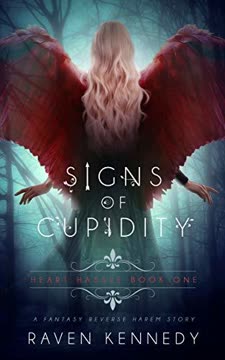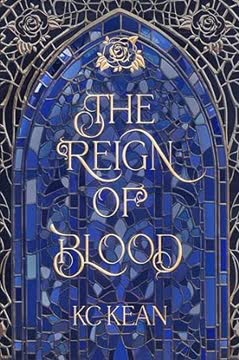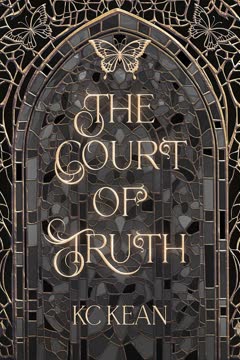Plot Summary
Waking in Darkness
Medley Bell wakes in a cold, dark cell, her mind foggy and her body shivering on stone. She's trapped, powerless, and terrified, with only the echo of a menacing voice—Morax, the Ophidian—reminding her of her captivity. The horror intensifies as she realizes she's not alone: another woman, battered and lifeless, lies nearby—her lost sister, Sable. The realization that Morax has captured them both, and that Sable may already be dead, fills Medley with dread and guilt. The cell is a prison of both body and mind, and Medley's only hope is that the compulsion Morax wields will fade, allowing her to fight back. But for now, she is helpless, forced to witness the aftermath of Morax's cruelty and the looming threat of her own fate.
The Asylum's Last Day
Sable Pierce, institutionalized for most of her life, endures her final day at Serenity Peaks Asylum. She's numb to the world, resigned to her diagnosis, and skeptical of hope. The closure of the asylum means a transfer to a new facility, and Sable's only comfort is the kindness of Nurse Tyson, the closest thing to family she's ever known. Her reality is shaped by hallucinations—"flickers"—that make her question what's real. As she's handed over to her new doctor, Sable's anxiety spikes, especially when her new escort appears monstrous to her broken mind. The transition is abrupt and jarring, and Sable's sense of safety evaporates as she's led away, her suitcase and her past left behind. The world outside is no less threatening, and Sable's journey into the unknown begins with fear and uncertainty.
The Ophidian's Trap
Sable's transfer is a ruse; her new "doctor" is Morax, the Ophidian, a demon with the power to compel obedience. Drugged and disoriented, Sable is dragged into a realm of darkness and pain. She awakens in a dungeon, caged and stripped of agency, surrounded by the echoes of suffering. Morax's compulsion is absolute—her body betrays her, and her mind is battered by his commands. The cell is a place of torture, both physical and psychological, and Sable's only defense is the blackness that sometimes shields her from pain. She clings to the hope that the darkness will protect her, but Morax's demands grow more violent, and the threat of annihilation looms. Sable's reality fractures, and she is forced to confront the possibility that her hallucinations were never delusions, but glimpses of a hidden, monstrous world.
Dungeon of Despair
Sable's days blur into a cycle of agony and numbness. Morax's attempts to force her to "call her scythe" are met with confusion and resistance, and each failure brings new torments. The blackness that overtakes Sable is both a shield and a prison, leaving her aware but unable to act. In her isolation, a mysterious voice—Wrath—intrudes on her thoughts, mocking and challenging her. The voice is both a torment and a lifeline, hinting at powers and connections Sable doesn't understand. The arrival of Medley, her sister, offers a glimmer of hope, but also new pain, as Morax's cruelty extends to both of them. The dungeon becomes a crucible, forging rage and desperation, and Sable's only solace is the growing bond with her fellow prisoners and the darkness within.
Sisters and Strangers
Sable, Medley, and the demon Toreon form a fragile alliance in their shared misery. Medley's presence is a revelation—she is Sable's sister, separated since childhood, and their reunion is bittersweet, shadowed by guilt and regret. Toreon, a broken but resilient demon, offers knowledge and a measure of comfort, though his own hope is nearly extinguished. The sisters share their stories, piecing together the truth of their origins and the nature of their powers. The scythe, a weapon of unimaginable significance, becomes the key to their survival. As they struggle to resist Morax's compulsion, the bonds of family and friendship grow stronger, and the possibility of escape—however remote—begins to take shape.
The Truth of Blood
Medley reveals the truth: she, Sable, and a third sister, Delta, are Annuli—beings of both Heaven and Hell, hidden in the Mortal Realm for their own protection. Their mother, Nefta, separated them to keep them safe, but fate has drawn them together in the darkest of places. Sable's lifelong hallucinations were glimpses of the true nature of the world, not madness. The sisters' powers are tied to their blood and their scythes, and Morax's obsession with them is rooted in their unique ability to reset souls. The realization is both liberating and infuriating—years of suffering were the result of secrets and lies. As the sisters grapple with their identity, anger and purpose ignite within them, fueling their determination to fight back.
Compulsion and Defiance
Morax's compulsion is a weapon, but Sable's darkness offers resistance. The sisters experiment with their powers, seeking ways to shield themselves from Morax's commands. The cost of defiance is high—pain, humiliation, and the threat of death—but each small victory strengthens their resolve. The arrival of Toreon's protector, Vudu, brings new hope and the promise of escape. The bonds between the prisoners deepen, and the lines between ally and mate begin to blur. As the sisters learn to manipulate their darkness, they prepare for the inevitable confrontation with Morax, knowing that their survival depends on their ability to outwit and outlast him.
Summoning the Scythe
With Toreon's guidance, Sable learns to summon her scythe, a weapon of immense power and personal significance. The act is both painful and transformative, marking the true awakening of her Annulus nature. The scythe is more than a tool—it is a symbol of identity, agency, and destiny. The sisters' mastery of their weapons becomes the linchpin of their resistance, and the first real hope of escape. The cost is high—each use of power brings new dangers, and Morax's rage grows with every act of defiance. But the sisters are no longer victims; they are warriors, ready to fight for their freedom and each other.
Breaking the Wards
The sisters perform a ritual to break the wards that have suppressed their powers since childhood. Medley's blood, smeared on Sable's skin, ignites a transformation that is both physical and spiritual. The wards shatter, and the full force of their Annulus heritage floods into them. The darkness within becomes a source of strength, and the sisters' connection deepens, allowing them to share power and purpose. The ritual is a rebirth, marking the end of their captivity and the beginning of their true journey. The past is not forgotten, but it is no longer a prison. The sisters are ready to claim their destiny.
Becoming Annulus
Sable's awakening is complete—her wings, her scythe, and her darkness are now fully hers. The pain of the past is tempered by the joy of reunion and the promise of a future. The sisters' bond is unbreakable, and their powers are formidable. The darkness that once protected Sable now empowers her, and the scythe is both a weapon and a symbol of her true self. The sisters are no longer lost or broken; they are Annuli, heirs to a legacy of balance and power. The time for hiding is over. The time for action has come.
The Darkness Within
Sable's dreams become a battleground of memory and revelation. She relives the traumas of her childhood, the abandonment, the accusations of madness, and the pain of loss. But within the darkness, she finds the voice of Wrath—a demon who is both adversary and potential mate. Their connection is electric, fraught with challenge and desire. The dream is a crucible, forging Sable's resolve and clarifying her purpose. She is not alone; she is not broken. The darkness is her ally, and the voice of Wrath is both a warning and a promise of what is to come.
Mates and Bonds
The bonds between Sable, her sisters, and their allies deepen, evolving from friendship to love and from alliance to mating. Toreon and Vudu, once broken and hopeless, find purpose and healing in Sable's presence. The connection with Wrath—now revealed as Ire, progeny of the Sin of Wrath—becomes a beacon of both power and vulnerability. The concept of multiple mates is both daunting and exhilarating, and Sable must navigate the complexities of love, loyalty, and desire. The forging of these bonds is both a source of strength and a target for Morax's manipulations.
The Gatekeeper's Chains
Toreon's true nature as a Gatekeeper is revealed, and Morax's plan comes into focus. The creation of a portal to Heaven is both a feat of power and an act of self-destruction, draining Toreon to the brink of death. Sable's blood, potent and restorative, becomes the key to his survival, but the cost is intimacy and vulnerability. The forging of the portal is a moment of both triumph and terror, as the balance of power shifts and the stakes become existential. The chains that once bound Toreon are both literal and symbolic, and their breaking marks a turning point in the battle for freedom.
The Devil's Bargain
The Seven Sins, led by Tazreel (Pride) and Wrath, convene a council to confront the threat of Morax. The gathering is both a celebration and a trap, designed to lure Morax into the open and end his reign of terror. Sable and her sisters, disguised and compelled, must navigate a web of deception and danger. The council is a crucible of power, politics, and betrayal, and the true nature of the Sins is revealed. The Devil himself, Lucifer, is drawn into the conflict, and the battle lines are drawn. The fate of Hell—and all the realms—hangs in the balance.
The Sins' Gathering
The council devolves into chaos as Morax's true intentions are revealed. The sisters' disguises are stripped away, and the compulsion is broken. Allies and enemies are unmasked, and the battle for control erupts. The portal to Heaven becomes the focal point of Morax's plan, and the sisters must choose between saving their mates and saving the world. The cost of victory is high, and the line between sacrifice and survival blurs. The Sins, once arrogant and complacent, are forced to confront their own failures and the consequences of their actions.
The Portal's Price
The battle for Hell reaches its climax as Morax's forces clash with the Sins, the sisters, and their allies. Toreon, drained and dying, becomes the linchpin of the conflict, his power both a weapon and a vulnerability. The sisters, united in purpose and power, unleash the full force of their Annulus heritage, wielding their scythes to devastating effect. The portal to Heaven is both a gateway and a threat, and the price of closing it is steep. The battle is brutal, the losses are heavy, and the outcome is uncertain until the very end.
The Battle for Hell
The sisters, joined by their mother Nefta, form a circle of power around Morax, their scythes united in purpose. The ritual of annihilation is both ancient and final, erasing Morax from existence and breaking the chains of compulsion that bound so many. The aftermath is both triumphant and somber, as the survivors reckon with the cost of victory and the promise of a new beginning. The Hellgate is restored, the balance is renewed, and the sisters claim their place as guardians of both Heaven and Hell. The bonds of family, love, and destiny are stronger than ever, and the future is theirs to shape.
The End of Morax
With Morax defeated and the realms saved, Sable, her sisters, and their mates return to the Mortal Realm to build a new life. The wounds of the past begin to heal, and the bonds of love and family are celebrated. The sisters are finally free to be themselves, to love and be loved, and to claim the happiness that was denied them for so long. The story ends not with a battle, but with laughter, hope, and the promise of a future shaped by choice, not compulsion. The darkness within has become a source of strength, and the Annuli are no longer victims—they are the architects of their own destiny.
Characters
Sable Pierce
Sable is the emotional and narrative heart of the story—a woman whose life has been defined by trauma, abandonment, and the belief that she is broken. Her journey from institutionalized "madwoman" to empowered Annulus is both harrowing and inspiring. Sable's hallucinations are revealed to be glimpses of the true supernatural world, and her struggle to distinguish reality from delusion is both a metaphor for trauma and a literal battle for survival. Her relationships—with her sisters, her mates, and her own darkness—are complex and deeply felt. Sable's arc is one of self-acceptance, the reclamation of agency, and the forging of unbreakable bonds. Her resilience, vulnerability, and capacity for love make her a compelling and relatable protagonist.
Medley Bell
Medley is the emotional anchor of the trio, her Southern warmth and unwavering hope providing comfort and strength to those around her. Despite her own suffering, Medley remains open-hearted and determined to protect her sisters. Her powers as an Annulus are matched by her empathy, and her ability to see the best in others is both a gift and a vulnerability. Medley's relationship with her mates is nurturing and joyful, and her bond with Sable and Delta is unbreakable. She is the glue that holds the group together, and her optimism is a beacon in the darkest of times.
Delta Gates
Delta is the warrior of the sisters, her strength and determination forged by hardship and loss. She is quick to anger, fiercely loyal, and unafraid to challenge authority. Delta's pragmatism is both a shield and a weapon, and her willingness to make hard choices is essential to the group's survival. Her relationship with her mates is passionate and complex, and her bond with her sisters is both a source of pride and a burden of responsibility. Delta's arc is one of learning to trust, to accept help, and to embrace vulnerability as a form of strength.
Morax, the Ophidian
Morax is the primary antagonist, a demon whose power to compel obedience is both his greatest weapon and his fatal flaw. He is cunning, sadistic, and obsessed with control, viewing the Annuli as tools to achieve his ambitions. Morax's psychological warfare is as devastating as his physical cruelty, and his ability to exploit fear and weakness makes him a terrifying adversary. His downfall is rooted in his arrogance and his underestimation of the power of love, family, and free will. Morax is a study in the dangers of unchecked power and the corrosive effects of obsession.
Toreon
Toreon is a demon whose life has been defined by loss, captivity, and the burden of power. As the last of the Gatekeepers, his abilities are both a gift and a curse, and his survival is a testament to resilience and sacrifice. Toreon's relationship with Sable is transformative, offering both of them the possibility of healing and redemption. His bond with Vudu is one of loyalty and shared trauma, and his journey is one of reclaiming agency and purpose. Toreon's arc is a meditation on the cost of duty, the pain of survival, and the possibility of hope.
Vudu
Vudu is Toreon's sworn protector, a demon of immense strength and unwavering loyalty. His love for Toreon is both brotherly and sacrificial, and his willingness to endure pain and risk for the sake of others is a defining trait. Vudu's relationship with Sable is tender and grounding, offering her a sense of safety and belonging. His presence is a stabilizing force, and his quiet strength is a counterpoint to the chaos around him. Vudu's arc is one of finding purpose beyond duty and embracing the possibility of happiness.
Ire (Wrath)
Ire is the progeny of the Sin of Wrath, a demon whose arrogance and temper mask a deep capacity for love and loyalty. His connection with Sable is electric, fraught with challenge and desire. Ire's journey is one of learning to balance power with vulnerability, to accept love without fear of losing control. His relationship with Sable is both a source of strength and a crucible for growth, forcing him to confront his own flaws and embrace the possibility of change. Ire's arc is a meditation on the nature of anger, the power of connection, and the redemptive potential of love.
Nefta
Nefta is the sisters' mother, an angelic being whose choices have shaped the destinies of her daughters. Her decision to separate and hide her children is both an act of love and a source of pain, and her guilt is a constant companion. Nefta's arc is one of seeking forgiveness, making amends, and learning to trust in the strength of her daughters. Her presence is both a comfort and a challenge, and her relationship with the sisters is a testament to the complexities of motherhood and the cost of protection.
Tazreel (Pride)
Tazreel is the Sin of Pride, the sisters' father, and a figure of both authority and vulnerability. His pride is both a strength and a weakness, shaping his relationships and his decisions. Tazreel's arc is one of learning humility, accepting responsibility, and embracing the messiness of family. His love for his daughters is genuine, but often expressed in awkward or misguided ways. Tazreel is a study in the challenges of leadership, the dangers of arrogance, and the possibility of growth.
Lucifer
Lucifer is both a figure of awe and a source of wisdom, embodying the complexities of good and evil, power and restraint. His role as the architect of Hell and the guardian of balance is both a burden and a calling. Lucifer's interactions with the sisters are marked by respect, humor, and a recognition of their importance. His arc is one of stewardship, adaptation, and the willingness to learn from the next generation. Lucifer is a reminder that even the most powerful beings are shaped by the choices they make and the connections they forge.
Plot Devices
Compulsion and Resistance
The central plot device is Morax's power of compulsion, which strips characters of free will and forces them into acts of violence and submission. This power is both a literal and metaphorical representation of trauma, abuse, and the struggle for autonomy. The sisters' resistance—through darkness, blood, and the forging of bonds—is a narrative of empowerment and the reclamation of agency. The compulsion is also a source of tension, driving the plot and shaping the characters' choices.
The Scythe and Annulus Heritage
The scythe is both a tool and a symbol, representing the sisters' Annulus heritage and their unique power to reset or annihilate souls. The process of summoning, mastering, and wielding the scythe is a metaphor for self-acceptance and the embrace of destiny. The scythe is also a plot device that drives the action, enabling both resistance and victory. The Annulus heritage is a source of both danger and salvation, shaping the characters' relationships and the stakes of the story.
The Darkness Within
The darkness that overtakes Sable is both a shield and a source of power. It is a manifestation of trauma, a protective mechanism that becomes a weapon. The process of learning to control and share the darkness is a narrative of healing, growth, and the forging of identity. The darkness is also a plot device that enables resistance to compulsion, the forging of bonds, and the ultimate defeat of Morax.
Mates and Bonds
The concept of multiple mates is both a source of tension and a wellspring of strength. The forging of bonds—through blood, power, and shared experience—is a narrative of healing, trust, and the possibility of happiness. The mates are both allies and vulnerabilities, shaping the characters' choices and the stakes of the story. The process of claiming, accepting, and nurturing these bonds is a central plot device, driving both character development and the resolution of the conflict.
The Portal and the Gatekeeper
The creation and closing of the portal to Heaven is both a feat of power and a crucible of sacrifice. Toreon's role as Gatekeeper is both a gift and a curse, and the process of forging the portal is a narrative of endurance, loss, and redemption. The portal is also a plot device that raises the stakes, enabling both the threat of annihilation and the possibility of salvation. The cost of victory is measured in blood, power, and the willingness to let go.
Foreshadowing and Narrative Structure
The story is structured around cycles of captivity and liberation, trauma and healing, loss and reunion. Dreams and visions foreshadow both danger and revelation, and the layering of truth is both a narrative device and a metaphor for the process of self-discovery. The use of multiple perspectives, shifting timelines, and the gradual unveiling of secrets creates a sense of suspense and emotional depth.
Analysis
Grave Signs is a dark, emotionally charged fantasy that explores the intersections of trauma, identity, and the struggle for agency. At its core, the novel is about the reclamation of self in the face of overwhelming power—both literal and psychological. The sisters' journey from victims to warriors is a narrative of healing, the forging of bonds, and the embrace of destiny. The story interrogates the nature of power—who wields it, who suffers under it, and how it can be reclaimed or subverted. The use of compulsion as both a plot device and a metaphor for trauma is particularly resonant, as is the exploration of love, loyalty, and the complexities of family. The novel's structure—cycles of captivity and liberation, the layering of dreams and reality, the forging and breaking of bonds—mirrors the psychological journey of recovery and self-acceptance. The ultimate message is one of hope: that even in the darkest of places, the bonds of love, family, and self can be forged, and that the darkness within can become a source of strength rather than a prison. Grave Signs is a testament to the power of resilience, the necessity of connection, and the possibility of happiness after suffering.
Last updated:
Review Summary
Grave Signs received mostly positive reviews, with an average rating of 4.51/5. Readers praised the world-building, character development, and satisfying conclusion to the series. Many found Sable's story compelling and enjoyed the blend of darkness, humor, and romance. Some felt the relationship development was rushed, while others appreciated the focus on plot. The book's ending was widely praised for tying up loose ends and providing a satisfying conclusion to the series. Overall, fans of reverse harem and paranormal romance found it an entertaining read.


















